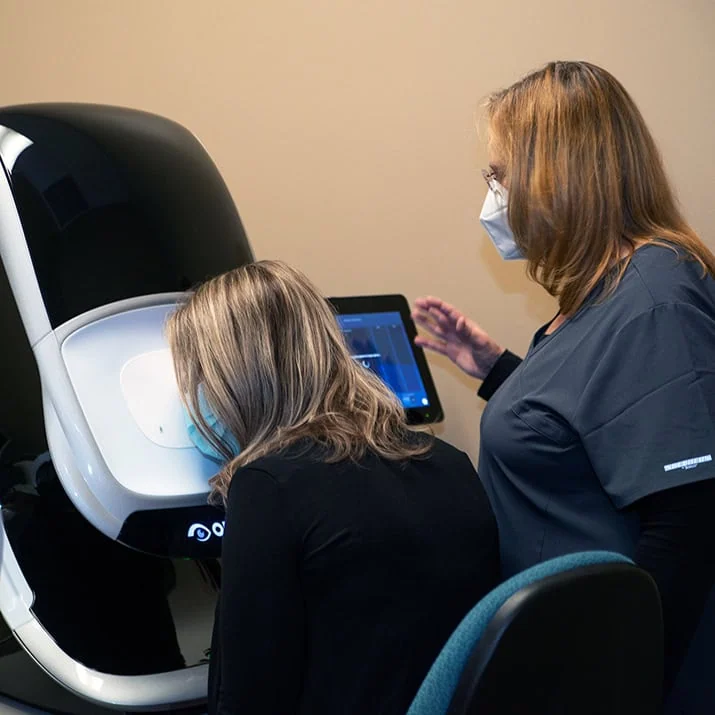Astigmatism
Astigmatism is a common eye condition that causes blurred vision due to either an irregular shaped cornea (the clear front cover of the eye), or the curvature of the lens inside the eye.
Overview
What is astigmatism?
Astigmatism is when part of the eye, either the cornea or the lens, is irregularly shaped. A perfectly curved cornea can bend, or “refract,” light properly as it enters the eye. In a person with astigmatism, either the cornea is egg-shaped with two different curves rather than perfectly round, or the lens has variations. Both irregularities cause images to reach the retina, the layer at the back of the eye, imperfectly. As a result, vision becomes blurred at any distance.
Most people have some degree of astigmatism. Slight amounts of irregularity usually don’t affect vision and don’t require treatment. However, larger amounts cause distorted or blurred vision, eye discomfort and headaches.
What are the different types of astigmatism?
There are three different types of astigmatism: myopic astigmatism, hyperopic astigmatism, and mixed astigmatism.
Myopic astigmatism
- This happens when astigmatism is combined with near-sightedness and the two curves in the cornea (or lens) are focused in front of the retina.
Hyperopic astigmatism
- This occurs when far-sightedness is combined with astigmatism and the two curves are focused behind the retina.
Mixed astigmatism
- This happens when one curve is far-sighted and the other is near-sighted.
When to call the doctor
Anytime you feel your vision is blurred or distorted or that your glasses/contact lenses are no longer giving you clear vision, you should make an appointment with your doctor.
Symptoms
What are the symptoms of astigmatism?
Astigmatism symptoms come on slowly and may include:
- Blurry or distorted vision
- Excessive squinting
- Eye strain
- Headaches
Diagnosis
How is astigmatism diagnosed?
A comprehensive optometric examination will include testing for astigmatism. Depending on the amount of astigmatism present, your optometrist can provide eyeglasses or contact lenses that correct the astigmatism by altering the way light enters your eyes.

Treatment & Prevention
How is astigmatism treated?
Astigmatism is considered very treatable like other refractive conditions. Most people living with astigmatism lead normal lives and have no further eye issues.